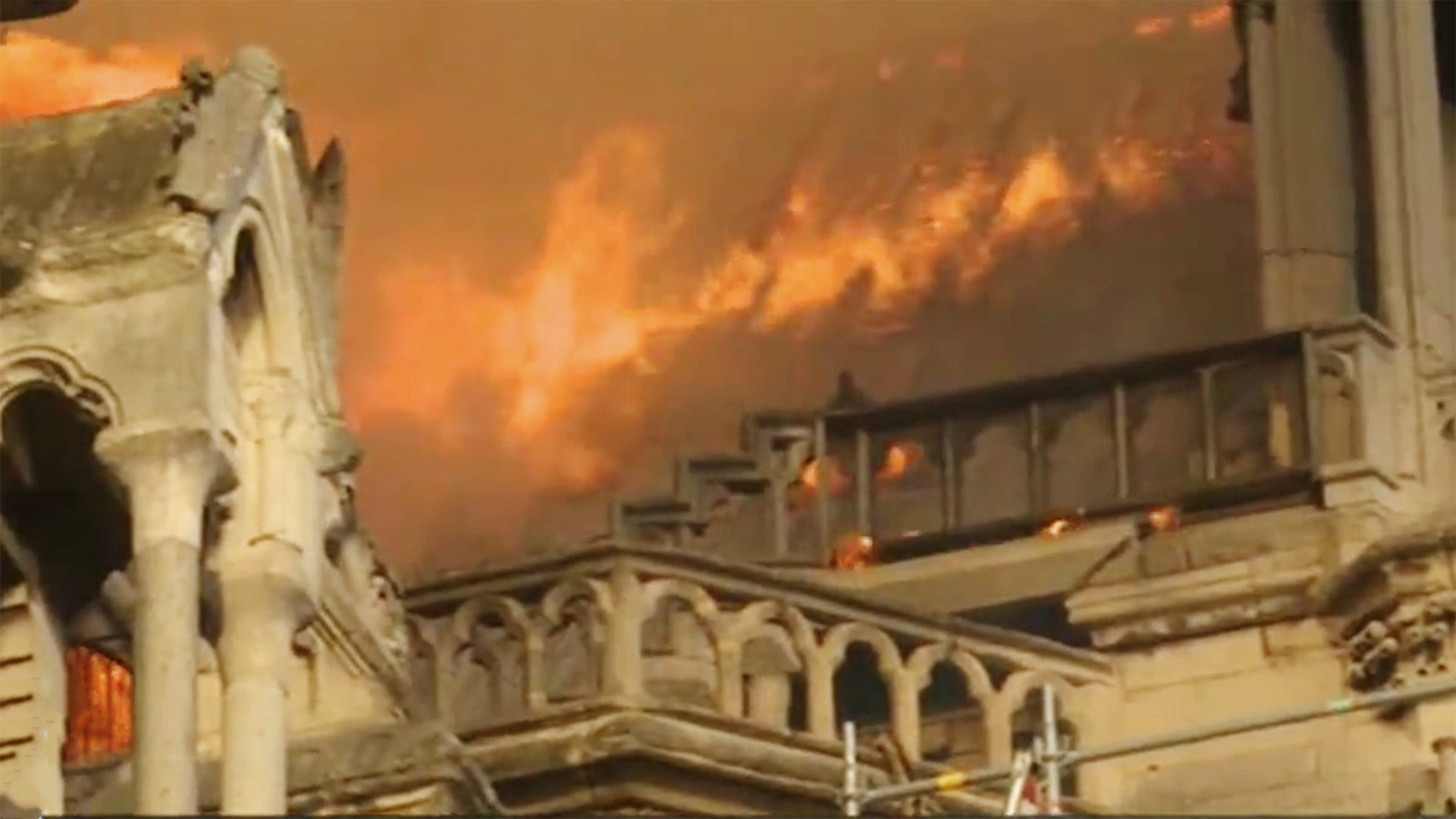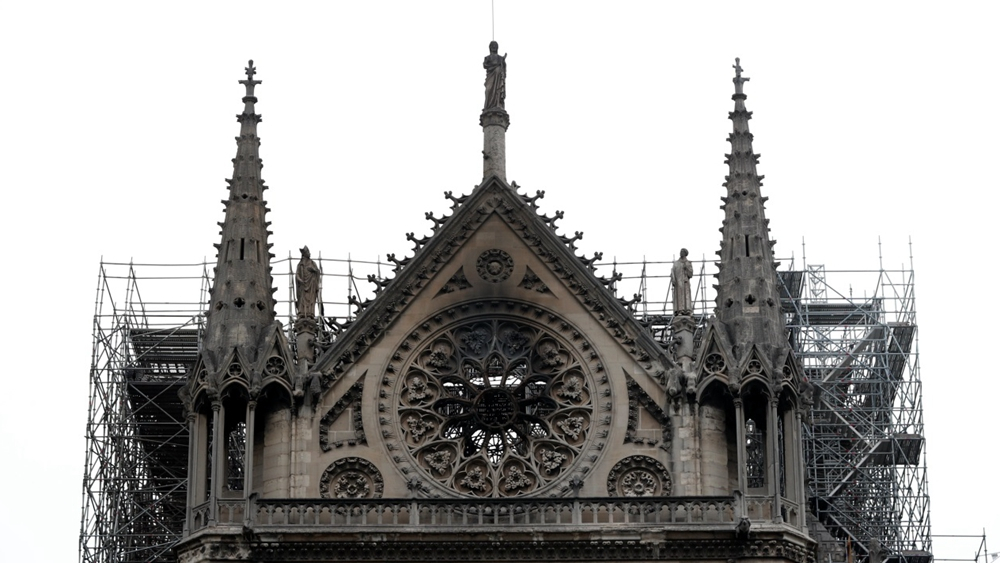
Europe
17:11, 16-Apr-2019
Notre-Dame Cathedral fire: Historical significance of France's most popular landmark
Nayan Seth, Zhang Congying
02:14

It's the national pride of France. Its structure is synonym with the French identity, even more so than the iconic Eiffel Tower.
It stood the test of time for over 850 years and witnessed two world wars without suffering a scratch.
Its foundation stone was laid in 1163 by Pope Alexander III, and the cathedral was completed almost 200 years later in 1345.
It was a massive structure upon completion – 128 meters long, 48 meters wide, and 69 meters at its highest point.
Notre-Dame is considered a feat of architecture, as well as a major religious and cultural symbol of France.
The cathedral is by far the most popular visitor attraction in France. Last year, around 13 million tourists visited the church, which hosts around 36,000 visitors each day, nearly double the number of people who visit the Eiffel Tower.

A view of Notre-Dame Cathedral after a fire devastated large parts of the gothic gem in Paris./ Reuters Photo
A view of Notre-Dame Cathedral after a fire devastated large parts of the gothic gem in Paris./ Reuters Photo
Apart from being a popular tourist destination, it's still a place of worship as 2,000 services are held every year.
But the damage to the structure and its history has been extensive.
Its central spire, which collapsed in the blaze, was built in the 19th century in a restoration effort. The fire also destroyed its stained-glass windows and the wooden roof. Its medieval wooden interior, an architectural marvel, has been gutted. The famous South Rose window created in 1260 is believed to have suffered damage too.
As Parisians watched in horror and despair, they say a part of them is gutted too.
Many believe Notre-Dame, both as an icon and a landmark, is irreplaceable. Paris for them would never be the same again.

SITEMAP
Copyright © 2018 CGTN. Beijing ICP prepared NO.16065310-3
Copyright © 2018 CGTN. Beijing ICP prepared NO.16065310-3